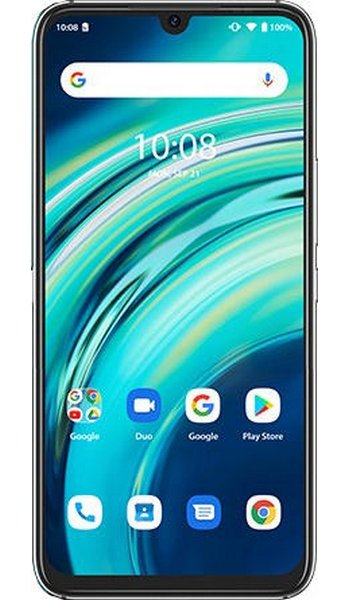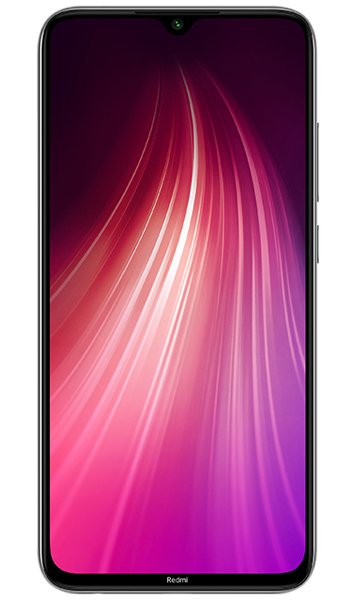Umidigi A9 Pro vs Xiaomi Redmi Note 8 Comparison and Differences
Smartphone 1

Umidigi A9 Pro
Smartphone 2

Xiaomi Redmi Note 8
Smartphone 3
Umidigi A9 Pro or Xiaomi Redmi Note 8 Specs Comparison
or
 Common specs
Common specs
| Brand and model | Umidigi A9 Pro | Xiaomi Redmi Note 8 | |
| Rating | (+0) | (+0) | |
| Release date | September, 2020 | 2019, August | |
| Dimensions (HxWxD) | 158.7 x 74.9 x 8.6 mm | 6.25 x 6.25 x 2.95 in | 158.3 x 75.3 x 8.4 mm | 6.23 x 6.23 x 2.96 in | |
| Weight | 213 g | 7.51 oz | 190 g | 6.7 oz | |
| Body Build | Plastic, Glass, Metal | Front/back glass (Gorilla Glass 5) | |
| Case | buy from Amazon | buy from Amazon | |
| Colors | Black, Green | Neptune Blue, Moonlight White, Space Black | |
| Battery | 4150 mAh, Li-Polymer, non-removable | 4000 mAh, Non-removable Li-Po | |
| Approximate price | $ 135 | 175 EUR | |
| Check price | from Amazon | from Amazon |
 Screen
Screen
| Technology | LCD IPS | IPS LCD | |
| Touchscreen | capacitive touchscreen | capacitive touchscreen | |
| Display colors | 16M | 16M | |
| Screen size | 6.3" in | 6.3" in | |
| Screen area | 97.4 cm2 | ||
| Screen format | 19.5:9 (height:width) | 19.5:9 (height:width) | |
| Screen to body ratio | 82% | 81.7% | |
| Screen resolution | 1080 x 2340 px | 1080 x 2340 px | |
| Screen PPI /points per inch/ | 409 PPI | 409 PPI | |
| Screen protection | Corning Gorilla Glass 5 | ||
| Screen protector | buy from Amazon | buy from Amazon |
 Camera and Video
Camera and Video
| Rear camera, main | 32 MP, Quad | 48 MP, Quad | |
| Camera specs | -32 MP, ƒ/ 1.79, (wide), -16 MP, ƒ/ , (ultrawide), -5 MP, (depth), -5 MP, ƒ/ , (macro) |
-48 MP, f/1.8, 26mm (wide), 1/2", 0.8µm, PDAF -8 MP, f/2.2, 13mm (ultrawide), 1/4", 1.12µm -2 MP, f/2.4, 1/5", 1.75µm (dedicated macro camera) -2 MP, f/2.4, 1/5", 1.75µm, depth sensor |
|
| Functions | LED flash | LED flash, HDR, panorama | |
| Video | 1080p video | 2160p@30fps, 1080p@30/60/120fps, gyro-EIS | |
| Front camera, selfie | 24 MP, Single | 13 MP, Single | |
| Specifications | 24 MP, ƒ/ 2.0 | 13 MP, f/2.0, 1.12µm | |
| Functions | HDR, panorama | ||
| Video | 1080p@30fps |
 Performance
Performance
| Operating system - OS | Android 10 Q | Android 9.0 (Pie); MIUI 10 | |
| Chipset | - MediaTek Helio P60 (MT6771) (12 nm) | - Qualcomm SM6125 Snapdragon 665 (11 nm) | |
| CPU | - Octa-Core (4x Cortex A73 2.0 GHz + 4x Cortex A53 2.0 GHz) | - Octa-core (4x2.0 GHz Kryo 260 Gold & 4x1.8 GHz Kryo 260 Silver) | |
| GPU | ARM Mali-G72 MP3 700MHz | Adreno 610 | |
| External memory | microSDXC (dedicated slot) | microSD, up to 256 GB (dedicated slot) | |
| Internal memory | 4GB 64GB, 8GB 128GB | 32GB 3GB RAM, 64GB 4GB RAM, 64GB 6GB RAM, 128GB 4GB RAM, 128GB 6GB RAM |
 Benchmark
Benchmark
| Antutu 10 Total | 227941 | ||
| Antutu 10 CPU | 84510 | ||
| Antutu 10 GPU | 34789 | ||
| Antutu 10 Mem | 51208 | ||
| Antutu 10 UX | 84510 | ||
| Antutu 9 Total | 190623 | ||
| Antutu 8 Total | 173592 | ||
| Antutu 7 Total | |||
| GeekBench 6 Single Core | 323 | ||
| GeekBench 6 Multi Core | 1062 | ||
| GeekBench 6 OpenCL | 293 | ||
| GeekBench 6 Vulkan | 477 | ||
| GeekBench 5 Single Core | 290 | 309 | |
| GeekBench 5 Multi-Core | 1433 | 1328 | |
| GeekBench 4 Single Core | 1499 | ||
| GeekBench 4 Multi-Core | 5543 |
 Communication and Connectivity
Communication and Connectivity
| SIM card | Dual SIM, dual stand-by (Nano SIM + Nano SIM) | Dual SIM (Nano-SIM, dual stand-by) | |
| Network | 2G / 3G / 4G / | GSM / HSPA / LTE | |
| Bands | -2G - B2 (1900), B3 (1800), B5 (850), B8 (900) -3G - B1 (2100), B2 (1900), B4 (1700/2100 AWS A-F), B5 (850), B6 (800), B8 (900), B19 (800) -4G - B1 (2100), B2 (1900), B3 (1800), B4 (1700/2100 AWS 1), B5 (850), B7 (2600), B8 (900), B12 (700), B13 (700), B17 (700), B18 (800), B19 (800), B20 (800), B26 (850), B28b (700), B28a (700), B34 (TDD 2100), B38 (TDD 2600), B39 (TDD 1900), B40 (TDD 2300), B41 (TDD 2500), B66 (1700/2100) |
-2G - GSM 850 / 900 / 1800 / 1900 - SIM 1 & SIM 2 -3G - HSDPA 850 / 900 / 1700(AWS) / 1900 / 2100 HSDPA 850 / 900 / 2100 -4G - LTE band 1(2100), 2(1900), 3(1800), 4(1700/2100), 5(850), 7(2600), 8(900), 20(800), 38(2600), 40(2300) LTE band 1(2100), 3(1800), 5(850), 8(900), 38(2600), 40(2300), 41(2500) |
|
| Speed | HSPA 42.2/11.5 Mbps, LTE-A | ||
| GPRS | Yes | Yes | |
| Edge | Yes | Yes | |
| Wi-Fi | 802.11a, 802.11b, 802.11g, 802.11n, 802.11n 5GHz, 802.11ac,Dual band ,Wi-Fi Hotspot ,Wi-Fi Direct ,Wi-Fi Display | Wi-Fi 802.11 a/b/g/n/ac, dual-band, Wi-Fi Direct, hotspot | |
| GPS | GPS, A-GPS, GLONASS, Galileo | Yes, with A-GPS, GLONASS, BDS | |
| NFC | No | ||
| USB | Yes, USB Type C, USB On-The-Go (OTG) | 2.0, Type-C 1.0 reversible connector, USB On-The-Go | |
| Bluetooth | Bluetooth 4.2, A2DP, HID | 4.2, A2DP, LE | |
| Harmful irradiation |
SAR - 0.26 W/kg (head) 1.00 W/kg (body) SAR EU - 0.19 W/kg (head) 1.09 W/kg (body) |
 Music and Audio
Music and Audio
| Radio | Yes | FM radio | |
| Headphone jack | Yes | Yes |
 Other features
Other features
| Sensors | - Fingerprint (rear-mounted), Proximity, Accelerometer, compass, gyro, Thermometer , Infrared port | - Fingerprint (rear-mounted), accelerometer, gyro, proximity, compass , Infrared port | |
| Other extras |
- Fast battery charging 18W - Splash protection |
Reviews and Opinions on Umidigi A9 Pro and Xiaomi Redmi Note 8
If you had to recommend one of these phones to a friend, which one would it be and why? Share your arguments using the Add Opinion button!
